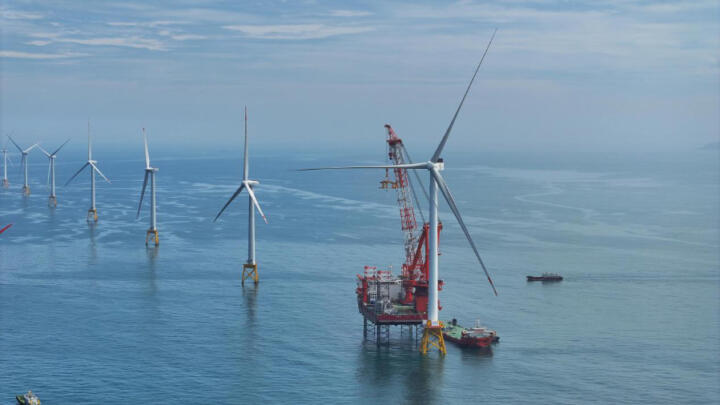Winds aloft and Herculean forces
Against the backdrop of ambitious climate goals and an ever-increasing awareness of sustainability issues in society, renewable energy generation – including wind power as a central component – is of growing importance. The progression to multi-megawatt turbines is resulting in higher loads and torques, which place the components under even greater strain, while the costs associated with downtime and maintenance work in the event of a failure are becoming increasingly higher, particularly where offshore systems are involved.
First 16 MW turbine on the grid

Chinese company Three Gorges Energy has connected the world's first 16-megawatt offshore wind turbine to the power grid. The colossus with a turbine height of 152 meters and a rotor diameter of 252 meters can supply clean energy for around 36,000 Chinese households.
“Our customers require reliable components that allow the increasing power density in wind turbines to be used to its full potential. With the Wind Power Standard, we have been ensuring the highest level of quality for more than ten years – and with more than a million bearings to date,” says Bernd Endres, Head of the Wind Power business unit at Schaeffler.

As market leader and strategic development partner, the global automotive and industrial supplier Schaeffler has been supplying reliable bearing solutions for onshore and offshore wind turbines for around 40 years. Rolling bearings from Schaeffler can be found in every second to third wind turbine worldwide. Schaeffler introduced a Wind Power Standard for wind turbine bearings more than ten years ago, which takes into account the high demands on the reliability of turbines and associated components. This standard for products and processes ensures that wind turbine bearings are subject to the highest quality standards, as also implemented, for example, in the automotive industry, and in the aviation and aerospace sectors. The start of the year marked the manufacture and delivery of the millionth bearing by Schaeffler in accordance with the Wind Power Standard.
Long-standing experience and comprehensive system expertise
In order to ensure these high standards, Schaeffler relies on coordinated and transparent processes, a defined change management system, strict quality control, and extensive documentation along the entire process chain, which is achieved in close cooperation with customers and suppliers. Targeted supplier development activities ensure that the highest quality standard is achieved from the outset.

Read more about Schaeffler in wind power HERE.
Compliance with the strict quality standards that apply on a global scale to all development and design teams, and to all production facilities that design and manufacture bearings for wind turbines, is monitored by means of internal audits. In addition to the long-standing experience and comprehensive system expertise of the specialists at Schaeffler, the use of state-of-the-art calculation and simulation programs in particular ensures that wind turbine bearings are designed to optimum effect. The calculations are supplemented and validated on powerful test rigs. Schaeffler offers extensive testing options, particularly for rotor bearings, in the form of the “Astraios” large-size bearing test rig.
A second life

Many rotor blades of first-generation wind power systems are now approaching the end of their lifecycle. The problem is that, despite research into recycling methods, their wings, which are typically made of fiberglass-reinforced plastic, or FRP for short, are still hardly recyclable special waste, unless they’re repurposed and continue to be used in sustainable ways. A stylish bicycle shelter like the one in the Danish city of Aalborg shown here is a case in point.


